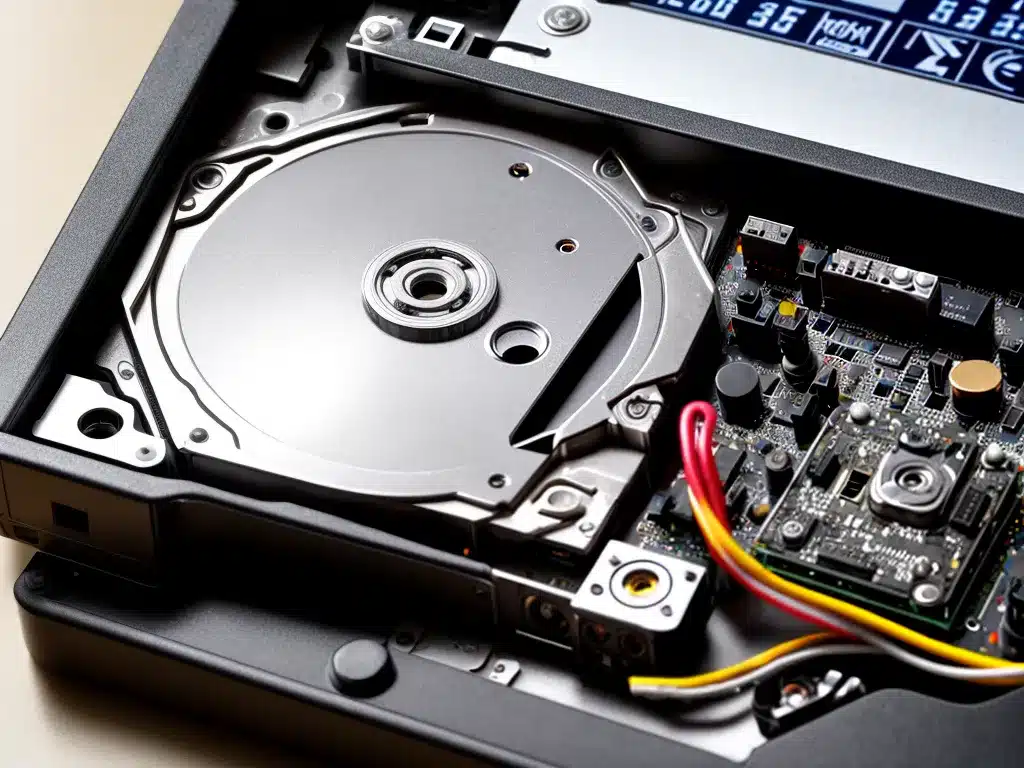
Introduction
Solid state drives (SSDs) provide faster performance and durability compared to traditional hard disk drives (HDDs). However, they can still fail unexpectedly, leaving you unable to boot into your operating system. When this happens, recovering your valuable data from the non-booting SSD should be a top priority.
In this article, I will provide an in-depth guide on how to recover data from a non-bootable SSD in 2022. We will cover various data recovery methods, software solutions, and tips to ensure you can get your files back.
Understanding Why an SSD Stops Booting
Before looking at data recovery methods, it helps to understand some common reasons why an SSD may stop booting properly:
-
Corrupted system files – The operating system files can become corrupted from sudden power loss, bad sectors, or file system errors. This prevents loading the OS.
-
Faulty controller – The SSD controller manages all read/write operations. If it fails, the drive will not function correctly.
-
Damaged SSD components – Issues with NAND flash memory chips, capacitors, etc. can render an SSD non-functional.
-
Malware infection – Viruses and other malware can sometimes damage boot partitions and system files.
-
Accidental reformatting – The drive may have been reformatted, deleting critical OS data.
-
Mechanical damage – Dropping or hitting an SSD can damage internal components and connections.
The specific reason for failure will dictate the best approach for data recovery. Next, we’ll look at some DIY solutions.
Trying DIY Data Recovery Methods
Before turning to professional recovery services, there are some DIY steps you can take to retrieve data from a non-bootable SSD:
Connect the SSD as an External Drive
- Use a SATA-to-USB adapter or external drive enclosure to connect the SSD to another working computer as an external drive. This allows access to the stored data.
Check Disk Management
- Open Disk Management and see if the external SSD is recognized and shows up. This indicates the drive is detectable.
Scan For Errors
- Run CHKDSK in Command Prompt to check for file system errors and bad sectors. Let it repair any found problems.
Browse External SSD
- With the external SSD connected, browse the folders and access any files you need to recover.
Use Data Recovery Software
These methods allow recovering data without advanced skills. But for critical business or personal data, a professional may be needed.
Choosing a Professional Data Recovery Service
DIY attempts don’t always work if there is physical damage or complex logical errors. For business-critical data or large personal collections, a professional recovery service should be utilized.
Benefits of Professional Data Recovery
- Expert skills – Professionals have experience recovering data from all storage devices and situations.
- Advanced tools – They have specialized software and hardware for best results.
- Clean room – Recovers data under sterile conditions if hardware needs repairs.
- No harm guarantee – Reputable companies guarantee no further damage to the device.
What to Look for in a Service
To find a reliable professional recovery company, research the following:
- Success rate – Choose a service with a high data recovery success rate.
- Security – They should securely erase drives after recovery and provide audit logs.
- Certified engineers – Well-trained and certified technicians use proper procedures.
- Clean room – A dust-free clean room should be used for any hardware procedures.
- Price transparency – Beware of vague pricing. Get clear costs upfront.
- No data, no charge – Many offer no charge if no data is recovered.
With an SSD that won’t boot, the best chance of success is typically via professional recovery. But costs can exceed $1000 in some cases.
Tips to Avoid Needing Data Recovery in the Future
While data recovery fills an important need, prevention is ideal. Here are tips to avoid a non-bootable SSD in the future:
- Perform regular backups of your most important files to external media or the cloud.
- Keep your SSD firmware and OS up to date.
- Use a UPS to prevent data loss from power outages.
- Don’t overfill your SSD. Leave at least 25% free space.
- Handle SSDs gently and transport in proper casings.
- Encrypt confidential data in case your SSD is lost or stolen.
- Monitor SSD health using tools like CrystalDiskInfo.
Following best practices for SSD care, maintenance, and data backups will reduce future reliance on drive recovery services.
Conclusion
While SSDs are generally reliable, there are many reasons one can suddenly stop booting. To recover important data from a non-bootable SSD, first try DIY methods like using a USB adapter or recovery software. But for business or personal data that absolutely cannot be lost, rely on a professional recovery service. They have the skills, tools, and lab environment to successfully extract your files under the most challenging circumstances. Just be sure to implement preventive measures going forward, like comprehensive backups, to avoid being in this situation again.












